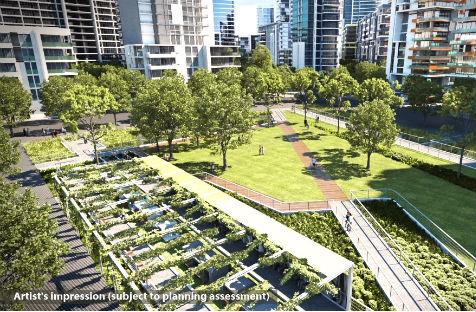A public art project is at the heart of a new sustainable community in the Sydney suburbs.
Green Square, across 278 hectares in central Sydney, is set to be a dynamic, sustainable village for people to live and work in.
The rapidly expanding area, which includes the suburbs of Beaconsfield and Zetland and parts of Rosebery, Alexandria and Waterloo, will eventually cater towards up to 40,000 culturally-diverse people of high employment, making areas of respite a necessity.
An area called the Drying Green is being designed as a hub, linking art with ecology, site and community. ‘The Drying Green is at the heart of the Green Square Town Centre – and will form a hub for the community as a place to gather, socialise and relax,’ said Green Square Public Art Curator Amanda Sharrad.
As part of the development the City of Sydney City Design have released expressions of interest encouraging artists to submit approach portfolios with ideas for public artwork. Themes relating to art and ecology, art and site and art and community are advised.
Sharrad explained how these themes could be applied to connect with existing and future communities.
‘Art and site encompasses the idea of the multiple histories of the site, one of which is the ecological history: the pre-European environment and the relationship between Aboriginal people and their country, and the following dramatic affects of colonisation upon this environment, with the draining of swamp lands for market gardens and industrialisation.’
From its origin as a swampland and wetland for Aboriginal people, to the introduction of farming and finally heavy industry the history of the Drying Green is certainly a rich narrative to draw from.
The history of flooding in the area is also a path to explore.
‘The themes of art and ecology may relate to the sustainable development and the environment in a broader way with an artwork that is a creative solution to an environmental concern.’
As Green Square and surrounding sites currently have a great number of residents from non-English speaking backgrounds a focus on this diversity could be a relevant approach.
‘Art and community may see an artwork that creates links with the multicultural community with an artwork that also speaks of the environment – such as a cultural planting or edible garden that the community maintains.’
While there is plenty of room to move within each theme, Sharrad explained that an artist need not limit herself or himself to just one of them.
‘These themes are not mutually exclusive and some artists will address all or some of them in their artworks,’ said Sharrad. ‘For example artists such as Fritz Haeg create Edible Estates that are artworks as edible gardens often utilising indigenous plant species of the area. He works with the community to realise and maintain these projects.’
More examples of possible approaches can be found in the Green Square Public Art Strategy. This resource should be used as a point of inspiration and information only, said Sharrad.
‘The beauty of commissioned artworks is that artists will always surprise with innovative proposals, and make connections that weren’t previously realised or even conceived of.’
For more information visit the City Art site.
(Pictured: The Drying Green, artist’s impression)





